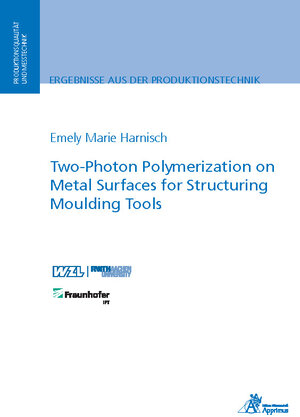Two-Photon Polymerization on Metal Surfaces for Structuring Moulding Tools
von Emely Marie HarnischGiven the fact of the increasing meaning of individual and functional micro- or nanostructures, it is of high interest to open up two-photon polymerization (TPP) as a structuring technology for production. TPP offers real 3D capability while providing a line width beyond the diffraction limit, so arbitrary geometries with e. g. optical, photonic or biological functionalities can be realized. The disadvantage about this technology is its relative small throughput when comparing it with established pro-cess chains in production, so the aim is to open up TPP as a mastering technology for metal substrates that serve as tools for injection moulding. Within this thesis, the main research question, if TPP is suitable for the structuring of metal tools for injection moulding, is addressed. To control the process and allow for a prediction of the voxel shape on metal surfaces, a comprehensive model is im-plemented in Matlab considering the temperature development in the metal surface during TPP, the polymerization process in the photosensitive hybrid polymer Ormo-Comp® as well as the final intensity distribution resulting in a stationary wave due to the superposition of incident and reflected laser beams. OrmoComp® is regarded here, since it is a so called hybrid polymer, containing SiO2-groups, that cause the polymerized material to be more resistant against the harsh conditions during injec-tion moulding like high pressures and temperatures. To verify the results of the model, ascending scans were performed. A comparison of the line’s cross sections from the experiments and the calculated voxel shape shows good agreement, also when considering variations of the parameters like the exposure dose. Thus, a model was implemented, that allows for the prediction of the resulting voxel shape during TPP on metal surfaces. Finally, simple geometries like cubes and semispheres were written on steel and casted with injection moulding for a validation.







